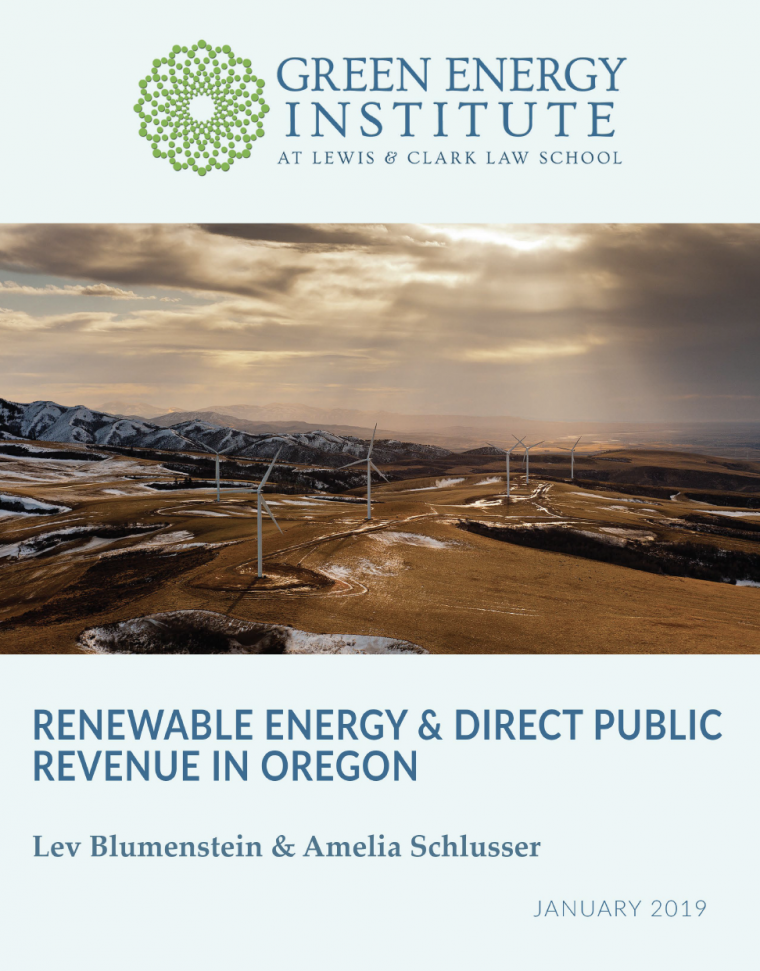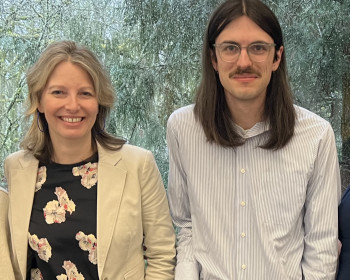Renewable Energy Projects Have Generated More than $120 Million in Tax Revenues for Rural Oregon Counties in Past Four Years, GEI Study Finds
Renewable energy projects provided Oregon counties more than $120 million in direct tax revenue over the past four years and nearly $32 million in tax year 2017-2018 alone, according to our latest study, Renewable Energy & Direct Public Revenues in Oregon. Rural counties in Oregon were by far the greatest beneficiaries of this revenue: in the 2017-2018 tax year, Sherman County received more than $12.5 million, Gilliam County received more than $8.5 million, and Umatilla, Morrow, and Malheur Counties each received around $2.5 million in direct tax payments from renewable energy projects. Read the full report for more information.
Open gallery

Renewable energy projects provided Oregon counties more than $120 million in direct tax revenue over the past four years and nearly $32 million in tax year 2017-2018 alone, according to a new study released by the Green Energy Institute at Lewis & Clark Law School (GEI). Rural counties in Oregon were by far the greatest beneficiaries of this revenue: in the 2017-2018 tax year, Sherman County received more than $12.5 million, Gilliam County received more than $8.5 million, and Umatilla, Morrow, and Malheur Counties each received around $2.5 million in direct tax payments from renewable energy projects.
“We’ve known that renewable resources bring economic benefits to states and local communities,” notes Amelia Schlusser, GEI staff attorney, “but this study proves how substantial those revenues can be.” In Sherman County, for example, renewable energy projects paid more than $2.5 million in property taxes, which represented about 35% of the county’s total certified property tax revenues for the 2017-2018 tax year. Sherman County also received an additional $10 million in direct renewable energy-related revenues that year.
The study is the first comprehensive assessment of the tax revenues that Oregon counties have earned from renewable energy projects. GEI Energy Fellow Lev Blumenstein accessed tax records from taxing districts around the state to calculate the revenues. “These records show that renewable energy is a great investment for the state and individual counties,” explains Schlusser. “We expect even higher revenues next year, because a few more projects have come online and will start paying taxes during the 2018-2019 tax year.”
GEI’s team hopes that the study’s results will influence more progressive and effective renewable energy policy design. “Oregon has amazing renewable resources, but our policies do not support steady renewable energy development,” observes Melissa Powers, GEI’s director and professor at Lewis & Clark Law School. “Oregon tends to support short-term policies that promote boom-and-bust cycles in the renewable sector. Our existing policies also make it hard for renewable energy facilities to get access to the transmission system. Hopefully, this study will help show lawmakers that renewable energy can benefit the whole state and lead to more effective renewable energy policy design overall.”
The study is available here.
More Green Energy Institute Stories
Green Energy is located in Wood Hall on the Law Campus.
email gei@lclark.edu
Director
Carra Sahler
Green Energy
Lewis & Clark Law School
10101 S. Terwilliger Boulevard MSC
Portland OR 97219

